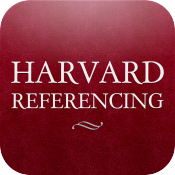Online Submissions
Registration and login are required to submit items online and to check the status of current submissions.
Author Guidelines
INSTRUCTIONS FOR AUTHORS
TREUBIA is a peer-reviewed, scientific zoological journal with focus on biosystematic aspects of terrestrial and aquatic fauna in the Indo-Australian region. TREUBIA is published twice a year and accepts manuscripts within the scope of the journal. It is accessible online at http://e-journal.biologi.lipi.go.id/index.php/treubia.
The missions of TREUBIA are to: (1) promote sciences and disseminate information in animal systematics and on the biodiversity of the region; (2) participate in the effort of educating public through good quality of scientific media and available professional researchers; (3) establish linkages among zoologists particularly in the field of systematics.
TREUBIA accepts manuscripts based on original research, taxonomic review or short communication. The manuscript should not be offered for prior or simultaneous publication elsewhere. It must be written in English and should use the American English spelling. Manuscripts should be prepared double-spaced in Microsoft Word, using Times New Roman font 12, A4 paper size. Template is available through e-journal. An electronic file of the manuscript along with a formal cover letter indicating the importance, stating its originality and its approval by all co-authors should be submitted to the editors of TREUBIA through http://e-journal.biologi.lipi.go.id/index.php/treubia or through e-mail address: treubia@gmail.com.
Concise writing is recommended. All numbers under 10 and any number forming the first word of a sentence must be spelled out, except in the Materials and Methods section of taxonomic papers. Year should be completely written. Names of genera and species should be in italic type. It is recommended to use metric measurements in abbreviation (for examples: kg, cm, ml). Please consult and refer to a recent issue of TREUBIA for an acceptable format. Please note that starting in 2018, we adopt Mendeley reference management application, with Harvard referencing style.
Manuscripts should be presented in the following order (with Conclusions and Appendices if necessary):
Title section. This includes the title of the paper (all capitalized), authors full name, authors institution and address (all with first letters capitalized), and e-mail address of the corresponding author. The title should be short, informative and without abbreviation.
Abstract. Except for short communications, articles should be accompanied by an abstract. The abstract consists of no more than 250 words in one paragraph which should clearly state the essence of the paper, with no references cited.
Keywords. Following the abstract, list up to 5 keywords, all typed in lowercase except a proper noun, separated by commas, presented in alphabetical order.
Introduction. The introduction must briefly justify the research and give the objectives. References related to the justification of the research should be cited in the introduction but extensive and elaborate discussion of relevant literature should be addressed in the Discussion section. References are to be cited in the text by the author’s surname and year of publication. When citing multiple sources, place them in chronological order, for example: (Glaubrecht, 1999, 2006; Glaubrecht et al., 2009; Maaβ & Glaubrecht, 2012). For two authors, both names should be cited. For three authors or more, only the first author is given followed by et al.
Materials and Methods. Provide a clear explanation of materials and methods used in the research. The place of specimen depository should be mentioned here.
Results. The results can be presented in the form of tables and figures when appropriate. The text should explain and elaborate the data presented. Captions of tables, figures, and plates should be inserted where you want them to be inserted. All line drawings, photographs and other figures should be submitted separately in JPEG format and the image size should be at least 1024 by 768 pixels.
Discussion. The discussion should interpret the results clearly and concisely, and should discuss the findings in relation with previous publications.
Acknowledgments. Acknowledgments of grants, assistance and other matters can be written in one paragraph.
References. List of references should be in alphabetical order by the first or sole authors surname. Journal references should include authors surname and initials, year of publication, title of the paper, full title of the journal (typed in italic), volume number and inclusive page numbers. Book references should include authors surname and initials, year of publication, title of the book (typed in italic) or/and title of the chapter and editor (if part of a book), publisher, city of publication, and page numbers.
For example:
Eaton, J.A., van Balen, B., Brickle, N.W. & Rheindt, F.E. 2016. Birds of the Indonesian Archipelago: Greater Sundas and Wallacea. 1st ed. Barcelona: Lynx Edicions.
LaSalle, J. & Schauff, M.E. 1994. Systematics of the tribe Euderomphalini (Hymenoptera: Eulophidae): parasitoids of whiteflies (Homoptera: Aleyrodidae). Systematic Entomology, 19: 235258.
MacKinnon, J. & Phillips, K. 1993. Field Guide to the Birds of Borneo, Sumatra, Java and Bali. Oxford: Oxford University Press: 491 pp.
Natural History Museum 2013. Wallace100 - celebrating Alfred Russel Wallace's life and legacy. http://www.nhm.ac.uk/nature-online/science-of-natural-history/wallace/index.html 11 October 2013.
Higgins, P., Christidis, L., Ford, H. & Bonan, A. 2017. Honeyeaters (Meliphagidae). In: J. del Hoyo, A. Elliott, J. Sargatal, D.A. Christie & E. de Juana, eds. Handbook of the Birds of the World Alive. Barcelona: Lynx Edicions. http://www.hbw.com.
Upon receiving a manuscript, a Treubia editor will check the compliance with these instructions and will send the manuscript to two reviewers. Based on comments from the reviewers and the suitability of the manuscript, Treubia editors will decide the acceptance or rejection of the manuscript. The author will be notified of the decision and will receive the manuscript with reviewers comments.
Following the process of reviewing and revising, a final proof will be sent to the first or sole author for correction and approval. Five reprints are supplied free of charge but delivery cost will be charged. Joint authors will have to divide these copies among them at their discretion. Additional reprints can be provided at cost, the order should be placed before the final printing.
please download INSTRUCTIONS here
Please download Template here

Submission Preparation Checklist
As part of the submission process, authors are required to check off their submission's compliance with all of the following items, and submissions may be returned to authors that do not adhere to these guidelines.
- The submission has not been previously published, nor is it before another journal for consideration (or an explanation has been provided in Comments to the Editor).
- The submission file is in OpenOffice, Microsoft Word, RTF, or WordPerfect document file format.
- Where available, URLs for the references have been provided.
- The text is double-spaced; uses a 12-point font; employs italics, rather than underlining (except with URL addresses); and all illustrations, figures, and tables are placed within the text at the appropriate points, rather than at the end.
- The text adheres to the stylistic and bibliographic requirements outlined in the Author Guidelines, which is found in About the Journal.
- If submitting to a peer-reviewed section of the journal, the instructions in Ensuring a Blind Review have been followed.
Copyright Notice
Author Rights
We require authors to transfer non-exclusive publishing rights to the publisher to enable BRIN Publishing to publish and distribute research articles. This rights transfer is established through a publishing agreement between the authors and BRIN Publishing. The agreement explicitly addresses the transfer or licensing of copyright for publishing purposes to BRIN Publishing, while authors maintain the necessary rights to utilize and share their published articles. BRIN Publishing fully supports authors in sharing, disseminating, and maximizing the impact of their research, including within any databases.
As an author publishing in Treubia, you possess a broad range of rights for various article uses, including within your institute or company. These author rights can be exercised without the requirement of obtaining explicit permission. When publishing in Treubia, authors enjoy extensive rights to utilize their works for educational and scholarly purposes, eliminating the need to seek permission (but it should follow the open access license of Creative Common CC-by-SA License) include :
- The author or the author's institution can freely employ the article for classroom teaching purposes and present it at meetings or conferences. Additionally, copies of the article can be distributed to the attendees without any hindrance
- The author's company can utilize the article for internal training purposes without any restrictions
- Shared with colleagues for their research purposes
- Incorporated into a future compilation of the author's works
- Include in a thesis or dissertation without any limitations
- Portions or extracts from the article can be reused in other works as long as proper acknowledgment of the original article is provided
- Derivative works can be prepared based on the article, excluding commercial purposes, as long as proper acknowledgment of the original article is given
- The author or the author's institution can voluntarily post the article on open web sites for scholarly purposes
Authors, readers, and third parties can copy and distribute the material in any medium or format. They can also remix, transform, and build upon the material for any purpose, including commercial purposes. However, it is essential to give appropriate credit by mentioning the name of the creator and attribution parties (including the authors' detailed information). A copyright notice, an open-access license notice, a disclaimer notice, and a link to the material should also be provided. Moreover, a link to the license and an indication of any changes made must be included. The publisher should indicate any modifications to the material and retain a record of previous modifications using a CrossMark Policy. Furthermore, information regarding Erratum-Corrigendum notification should also be provided.
Authors, readers, and third parties have the freedom to access, read, print, and download the article. They can also redistribute or republish it by displaying it in a repository. Additionally, they can translate the article, download it for text and data mining purposes, reuse portions or extracts from it in other works, sell or reuse it for commercial purposes, and remix, transform, or build upon the material. They must distribute their contributions under the same license as the original Creative Commons Attribution-ShareAlike (CC BY-SA) license.
Publishing Right
By submitting a manuscript, the authors acknowledge and agree that, if accepted for publication, the article's non-exclusive right for publishing (publishing right) shall be assigned or transferred to the Publisher of Treubia journal (BRIN Publishing).
Once an article is accepted, authors will receive a notification email, including a 'Copyright Transfer Agreement for Publishing' form. This form, known as the CTAP (Copyright Transfer Agreement for Publishing), needs to be completed by the authors. The agreement can be conveniently accessed online.
Treubia journal and BRIN Publishing, along with the Editors and the Editorial Board, are committed to upholding the highest standards to prevent the publication of incorrect or misleading data, opinions, or statements in the journal. However, it is essential to note that the authors and advertisers hold the sole and exclusive responsibility for the content of the articles and advertisements published in Treubia journal.
It is important to remember that while we request a transfer of copyright for publishing through the CTAP, our journal ensures that the authors retain (or are granted back) significant scholarly rights, as mentioned earlier.
The form of Copyright Transfer Agreement for Publishing (CTAP)can be downloaded here
Privacy Statement
The names and email addresses entered in this journal site will be used exclusively for the stated purposes of this journal and will not be made available for any other purpose or to any other party.






